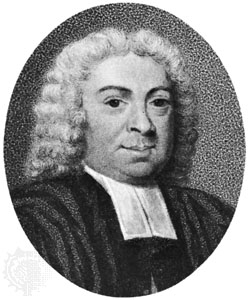Related Research Articles
Charles Abbot may refer to:

Sir James Edward Smith was an English botanist and founder of the Linnean Society.

Johann Jacob Dillen Dillenius was a German botanist. He is known for his Hortus Elthamensis on the rare plants around Eltham, London, and for his Historia muscorum, a natural history of lower plants including mosses, liverworts, hornworts, lycopods, algae, lichens and fungi.

Charles Abbot, 1st Baron Colchester PC, FRS was a British barrister and statesman. He served as Speaker of the House of Commons between 1802 and 1817.
William Hudson FRS was a British botanist and apothecary based in London. His main work was Flora Anglica, published in 1762. He was elected a fellow of the Royal Society in 1761.

Sir Henry Ellis was an English librarian and antiquarian, for a long period principal librarian at the British Museum.

Thurcytel was abbot of Crowland and perhaps also of Bedford Abbey.

Hugh Davies was a Welsh botanist and Anglican clergyman. He spent most of his professional life on the island of Anglesey and published a treatise on the flora of the county, which was the first volume to cross-reference plant names in the Welsh language with their scientific names.

Charles Symmons was a Welsh poet and priest.
Abbot is an English surname derived from the word "abbot". It is a spelling variant of the more common name Abbott. Notable people with this surname include:

Edward Rudge was an English botanist and antiquary.
John Galpine was a British nurseryman and botanical writer.
Edmund Davall was a Swiss-English botanist.

Giovanni Gussone was an Italian academic and botanist, remembered for his work in plant taxonomy and in particular his research in Sicilian flora.

Alfred William Bennett was a British botanist and publisher. He was best known for his work on the flora of the Swiss Alps, cryptogams, and the Polygalaceae or Milkwort plant family, as well as his years in the publishing industry.
Nicol Alexander Dalzell FRSE FLS was a Scottish botanist. He was one of the first persons to form the link between forest denudation and the impact of rainfall upon the wider countryside.
Charles Longuet Higgins (1806–1885) was an English landowner, physician and benefactor.

John Mayo (1761–1818) was an English physician.
References
- ↑ Smith, James Edward. "Flora Britannica, auctore Jacobo Edvardo Smith, M.D. Societatis Linnaeanae Praeside, Regiae Londinensis, Holm. Upsal. Taurin. Olyssip. Philadelph. - Physiogr. Lund. Berolin. Paris. Aliarumque Societatum Socio". British Library. Retrieved 13 October 2023– via Gale Primary Sources.
- ↑ Slatter, Enid. "Abbot, Charles (1761–1817), botanist and entomologist". Oxford Dictionary of National Biography. Oxford University Press. Retrieved 13 October 2023.
- ↑ Foster, Joseph (1888–1892). . Alumni Oxonienses: the Members of the University of Oxford, 1715–1886 . Oxford: Parker and Co – via Wikisource.
- ↑ Slatter, Enid (2010) [First published 2004]. "Abbot, Charles". Oxford Dictionary of National Biography (online ed.). Oxford University Press. doi:10.1093/ref:odnb/2.(Subscription or UK public library membership required.)
- ↑ International Plant Names Index. C.Abbot.
- Attribution
 This article incorporates text from a publication now in the public domain : Stephen, Leslie, ed. (1885). "Abbot, Charles (d.1817)". Dictionary of National Biography . Vol. 1. London: Smith, Elder & Co.
This article incorporates text from a publication now in the public domain : Stephen, Leslie, ed. (1885). "Abbot, Charles (d.1817)". Dictionary of National Biography . Vol. 1. London: Smith, Elder & Co.